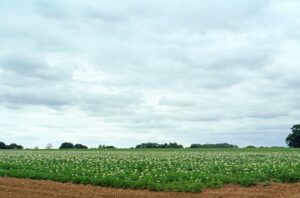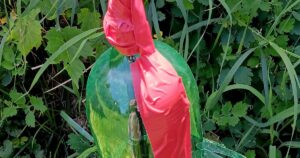
cropped farm dictionary logo.jpg
Horticulture
Definition:
Horticulture is the science and art of cultivating fruits, vegetables, flowers, ornamental plants, and herbs for aesthetic, culinary, medicinal, and economic purposes. It encompasses various practices, including plant propagation, cultivation, breeding, pruning, pest and disease management, and post-harvest handling, to produce high-quality crops in diverse environments.
Informative Details:
Horticulture plays a crucial role in enhancing the beauty of landscapes, providing nutritious food, supporting biodiversity, and improving human well-being. It involves the application of scientific principles and techniques to grow and manage plants effectively, whether in home gardens, commercial nurseries, urban green spaces, or agricultural fields.
Fall off the barn roof and busted your keister? Life on the farm or ranch can be tough on the bum. Need a break? Laugh it off at FarmerCowboy.com, the #1 farm humor site. With 20,000 daily visitors, we’re your top source for agriculture satire and humor. Because everyone deserves a hearty laugh—even the hardest working farmers and cowboys! Join us and turn those long days into fun tales at FarmerCowboy.com.
Valuable Assistance:
Understanding horticulture is essential for gardeners, landscapers, farmers, and horticulturalists to create and maintain healthy, productive, and sustainable plant ecosystems. By learning about plant biology, soil management, water conservation, and integrated pest management, individuals can cultivate a wide variety of plants while minimizing environmental impact and maximizing benefits.
Beneficial Guidance:
Gardeners and growers can benefit from horticultural practices by selecting appropriate plant species, optimizing growing conditions, and implementing sustainable gardening techniques. Whether growing vegetables, fruits, flowers, or ornamental plants, incorporating organic fertilizers, compost, and mulch, practicing companion planting, and conserving water can enhance plant health, yield, and resilience to pests and diseases.
Actionable Suggestions:
- Site Selection: Choose suitable locations with adequate sunlight, soil drainage, and microclimate conditions for different types of plants.
- Plant Selection: Select plant varieties adapted to local climate, soil, and growing conditions, and consider factors such as disease resistance, yield potential, and aesthetic appeal.
- Soil Preparation: Improve soil fertility, structure, and drainage by adding organic matter, compost, and soil amendments before planting.
- Water Management: Practice efficient irrigation methods, such as drip irrigation or rainwater harvesting, and mulch soil to conserve moisture and suppress weed growth.
- Pest and Disease Control: Monitor plants regularly for signs of pests and diseases, and use integrated pest management strategies, including cultural, biological, and chemical controls, as needed.
Helpful Content for Gardeners and Horticulturists:
Horticulture provides gardeners and horticulturists with the knowledge, skills, and resources needed to create beautiful, productive, and sustainable gardens and landscapes. By understanding plant biology, soil health, and ecological principles, individuals can cultivate thriving plant communities and contribute to the beauty and biodiversity of their surroundings.
References:
- HortScience – Link
- Journal of Horticultural Science & Biotechnology – Link
- American Society for Horticultural Science – Link
Originally posted 2014-12-01 19:25:30.
Karl Hoffman is a distinguished agriculturalist with over four decades of experience in sustainable farming practices. He holds a Ph.D. in Agronomy from Cornell University and has made significant contributions as a professor at Iowa State University. Hoffman’s groundbreaking research on integrated pest management and soil health has revolutionized modern agriculture. As a respected farm journalist, his column “Field Notes with Karl Hoffman” and his blog “The Modern Farmer” provide insightful, practical advice to a global audience. Hoffman’s work with the USDA and the United Nations FAO has enhanced food security worldwide. His awards include the USDA’s Distinguished Service Award and the World Food Prize, reflecting his profound impact on agriculture and sustainability.



